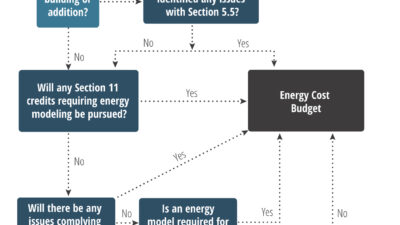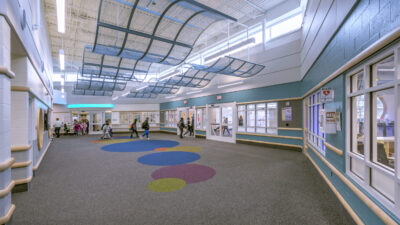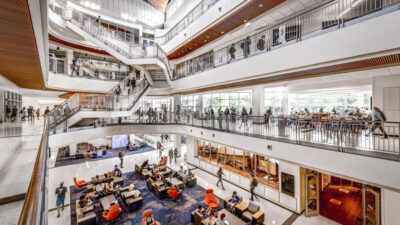Standard 90.1-2004 established as national reference standard by DOE
States must now certify that their building codes meet the requirements in ASHRAE/IESNA’s 2004 energy efficiency standard, under a ruling issued by the United States Dept. of Energy (DOE) that finds the standard saves more energy than an earlier version.
ANSI/ASHRAE/IESNA Standard 90.1-2004, Energy Standard for Buildings Except Low-Rise Residential Buildings, has been established by the DOE as the commercial building reference standard for state building energy codes under the federal Energy Policy Act.
The Act requires all states to certify that they have state energy codes in place that are at least as stringent as 90.1-2004, or justify why they cannot comply. The DOE determined that Standard 90.1-2004 saves more energy than Standard 90.1- 1999, which was the previously referenced standard in the Act.
“The quantitative analysis of the energy consumption of buildings built to Standard 90.1-2004, as compared with buildings built to Standard 90.1-1999, indicates national source energy savings of approximately 13.9% of commercial building energy consumption. Site energy savings are estimated to be approximately 11.9%,” according to the ruling published in The Federal Register on Dec. 30, 2008.
“ASHRAE is committed to continually improving building energy performance, so we are pleased with this recognition that the 2004 standard saves more energy,” ASHRAE President Bill Harrison said. “ASHRAE is currently working on the 2010 version of Standard 90.1 with a goal of achieving 30% energy savings compared to 90.1-2004 as part of our target to achieve market-viable net-zero-energy buildings by 2015.”
“The Illuminating Engineering Society is pleased to receive the DOE’s positive determination on the site and source energy savings achieved by ANSI/ASHRAE/IES Standard 90.1-2004 compared to the 1999 standard,” said Rita Harrold, IES director of technology. She also expressed the Society’s appreciation for the contributions of the committee members responsible for developing the standard, which help further the goals of the sponsoring organizations, and for the diligence of the DOE in conducting the determination.
The DOE noted that the newer version of the standard contained 13 positive impacts on energy efficiency. These impacts included changes made through the public review process in which users of the standard comment and offer guidance on proposed requirements to the standard. The positive impacts include:
• Removed explicit allowance for supply air into non-occupied isolation areas.
• Limitations of the use of dampers in closed circuit cooling towers in place of water bypass valves and piping.
• Additions of insulation requirements for buried ductwork.
• Mapping of envelope requirements to new climate zones, which led to increased stringency of envelope requirements.
• Mapping of economizer requirements to new climate zones, which led to greater geographic expansion of economizer requirements.
• Addition of requirements for ventilation fan controls.
• Lowered size range for part-load fan power limitation.
• Addition of requirements for heat pump pool heaters.
• Complete replacement of interior lighting power density allowances.
• Revised exterior lighting power density allowances.
• Addition of occupancy sensor requirements for classrooms, meeting, and lunch rooms.
• Lower retail sales lighting power allowance.
• New exit sign wattage requirement.
In addition, ASHRAE is working on providing more stringent energy guidance in a proposed standard for high-performance buildings. Being developed in partnership with IESNA and the U.S. Green Building Council, Standard 189.1, Standard for the Design of High-Performance Green Buildings Except Low-Rise Residential Buildings, will provide minimum requirements for the design of high-performance new commercial buildings and major renovation projects, addressing energy efficiency, a building’s impact on the atmosphere, sustainable sites, water use efficiency, materials and resources, and indoor environmental quality.
Since being developed in response to the energy crisis in the 1970s, Standard 90.1 now influences building designs worldwide. It has become the basis for building codes, and the standard for building design and construction throughout the United States. ASHRAE publishes a revised version of the standard every three years. The 2007 version of Standard 90.1 was released last year.
ASHRAE, founded in 1894, is an international organization of some 50,000 persons. ASHRAE fulfills its mission of advancing heating, ventilation, air conditioning and refrigeration to serve humanity and promote a sustainable world through research, standards writing, publishing and continuing education.



